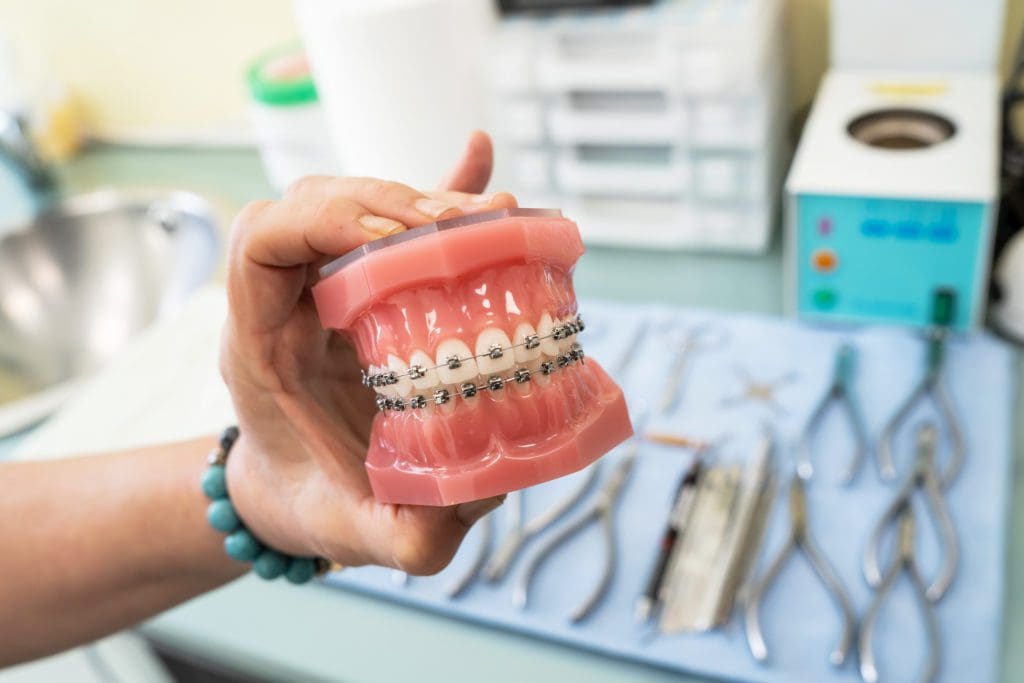Top Tips for Choosing the Best Cumming Orthodontist for Braces and Aligners
Top Tips for Choosing the Best Cumming Orthodontist for Braces and Aligners
Blog Article
Comprehensive Guide to Orthodontics Treatments for Fixing Dental Imbalances
In the realm of orthodontics, the journey to attaining a perfectly lined up smile entails a myriad of treatments tailored to remedy oral imbalances. From traditional braces to undetectable aligners and even surgical choices, the area of orthodontics provides a series of options to deal with differing levels of oral irregularities. Understanding the complexities of each treatment, including their devices, benefits, and prospective drawbacks, is critical in making informed decisions concerning one's orthodontic therapy. As we browse through the extensive guide to orthodontic procedures for remedying oral imbalances, the elaborate details of each technique will unravel, clarifying the course towards a practical and harmonious dental positioning.
Orthodontic Procedures Overview

Normal adjustments and tracking are critical components of orthodontic treatment to make sure development is on track and to make any needed alterations along the means. By undertaking orthodontic procedures, patients can not only accomplish a straighter grin however additionally boost their total oral wellness and feature.
Typical Dental Braces: How They Function
When thinking about orthodontic therapies for oral misalignments, typical dental braces stand apart as a time-tested method for dealing with teeth placing. Standard dental braces consist of braces, cables, and bands that function together to apply continual pressure on the teeth, progressively moving them right into the preferred positioning. The brackets are connected to the teeth utilizing an unique adhesive, and the cables are threaded via the brackets. By readjusting the stress of the cables, orthodontists can control the instructions and pressure put on each tooth, leading them into proper placement in time.
As stress is used to the teeth via the dental braces, the bone bordering the teeth is improved to support the new tooth placements. Patients will need routine adjustments at the orthodontist's workplace to make sure the braces continue to apply the appropriate pressure for efficient teeth motion.
Undetectable Aligners: Benefits And Drawbacks
Invisible aligners use a discreet and convenient choice to typical dental braces for dealing with oral misalignments. These clear, tailor-made trays are essentially unnoticeable when used, making them an appealing option for people seeking a much more aesthetically pleasing orthodontic therapy. One of the primary advantages of unnoticeable aligners is their removability, allowing for easier upkeep of dental hygiene compared to typical dental braces. Clients can remove the aligners prior to eating or cleaning their teeth, reducing the threat of food getting stuck in the device and simplifying the cleansing procedure.

Surgical Orthodontic Options
Surgical interventions in orthodontics existing sensible choices for attending to complicated oral misalignments that might not be successfully solved through standard orthodontic treatments. While traditional dental braces and invisible aligners can deal with several orthodontic concerns, particular instances need surgical intervention to accomplish optimal results. Surgical orthodontic alternatives are typically recommended for extreme malocclusions, substantial jaw disparities, and situations where the underlying bone structure needs alteration to accomplish appropriate alignment.
One common medical orthodontic procedure is orthognathic surgery, which involves rearranging the jaws to correct practical issues such as difficulty talking or chewing. This surgery is usually done in collaboration with an orthodontist that assists align the teeth prior to and after the treatment. Surgical orthodontics may additionally include treatments to subject impacted teeth, remove excess periodontal tissue, or improve the jawbone to create an extra harmonious facial account.
Before taking into consideration medical orthodontic choices, patients undertake a detailed evaluation to establish the necessity and possible benefits of such treatments. invisalign. While surgery may appear complicated, it can significantly enhance both the feature and looks of the smile in cases where standard orthodontic therapies fall short
Retainers and Post-Treatment Treatment

Failure to comply with post-treatment treatment guidelines can result in regression, where the teeth progressively relocate back in the direction of their initial placements. Constant retainer wear, great dental health, and normal oral exams are essential for maintaining the results attained via orthodontic surgical procedure and making certain the long-lasting security of the dealt with oral alignment.
Verdict
In final thought, orthodontic treatments offer different options for dealing with oral misalignments. Traditional dental braces make use of steel brackets and cords to move teeth into proper placement. Unseen aligners supply a more very discreet option but might not appropriate for all cases. Surgical orthodontic alternatives are readily available for much more severe imbalances. Retainers are typically used post-treatment to preserve the new alignment. In general, orthodontic procedures can effectively boost oral health and wellness and aesthetic look.
As we navigate with the thorough guide to orthodontic treatments for correcting oral imbalances, the intricate information of each method will certainly unfold, dropping light on the course toward a harmonious and useful dental placement. - look here cumming invisalign
One of look here the most common orthodontic therapies is the use of braces, which are composed of metal braces and cords that apply gentle pressure to gradually change teeth right into the desired setting.When taking into consideration orthodontic therapies for oral misalignments, standard dental braces stand out as a time-tested technique for correcting teeth placing. Furthermore, undetectable aligners may not be ideal for complex orthodontic problems that need even more substantial teeth activity, as they are generally suggested for moderate to modest situations. Retainers are personalized orthodontic devices designed to hold teeth in their corrected settings after the conclusion of orthodontic therapy.
Report this page